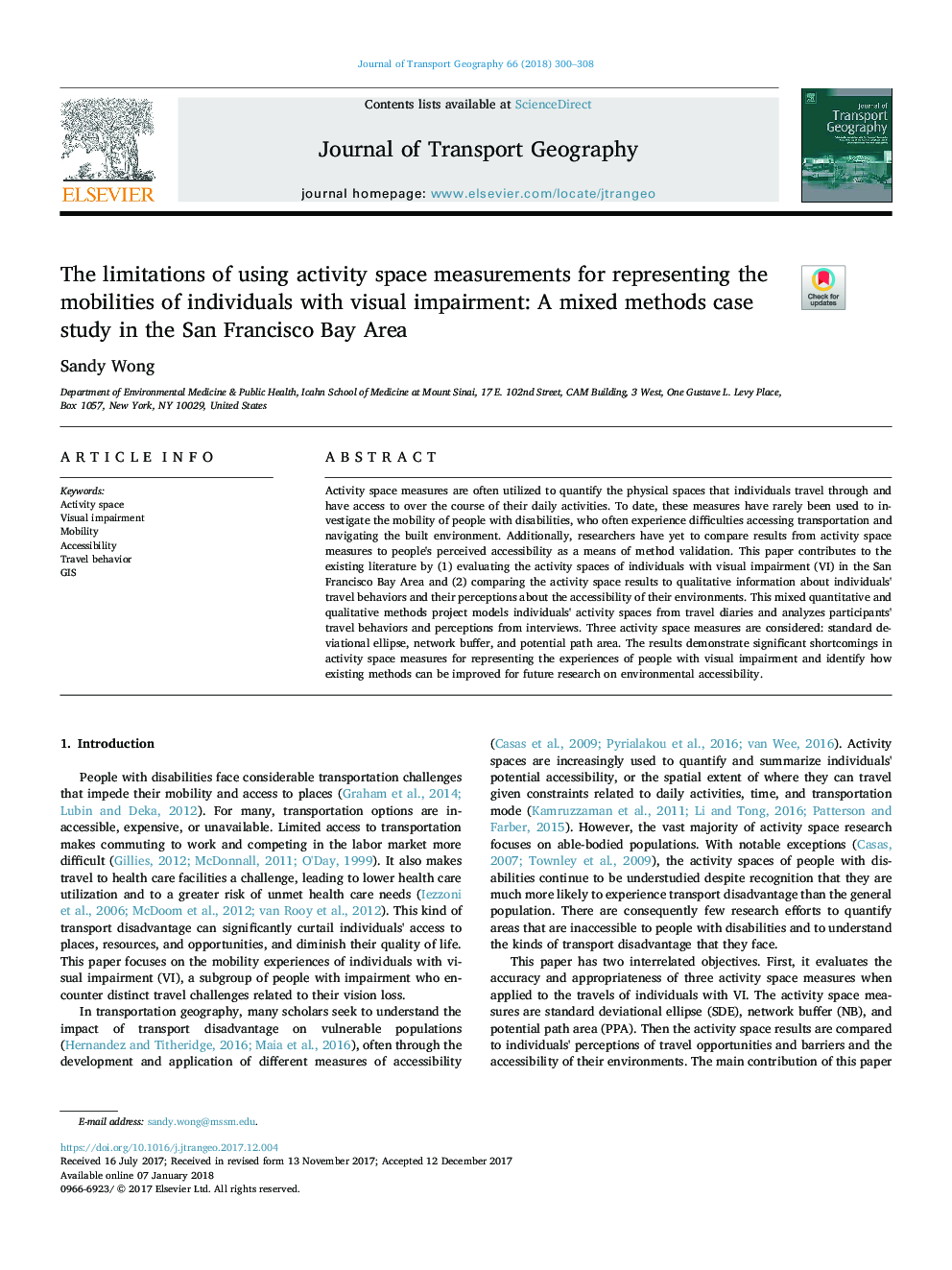| Article ID | Journal | Published Year | Pages | File Type |
|---|---|---|---|---|
| 7485231 | Journal of Transport Geography | 2018 | 9 Pages |
Abstract
Activity space measures are often utilized to quantify the physical spaces that individuals travel through and have access to over the course of their daily activities. To date, these measures have rarely been used to investigate the mobility of people with disabilities, who often experience difficulties accessing transportation and navigating the built environment. Additionally, researchers have yet to compare results from activity space measures to people's perceived accessibility as a means of method validation. This paper contributes to the existing literature by (1) evaluating the activity spaces of individuals with visual impairment (VI) in the San Francisco Bay Area and (2) comparing the activity space results to qualitative information about individuals' travel behaviors and their perceptions about the accessibility of their environments. This mixed quantitative and qualitative methods project models individuals' activity spaces from travel diaries and analyzes participants' travel behaviors and perceptions from interviews. Three activity space measures are considered: standard deviational ellipse, network buffer, and potential path area. The results demonstrate significant shortcomings in activity space measures for representing the experiences of people with visual impairment and identify how existing methods can be improved for future research on environmental accessibility.
Related Topics
Life Sciences
Environmental Science
Environmental Science (General)
Authors
Sandy Wong,
